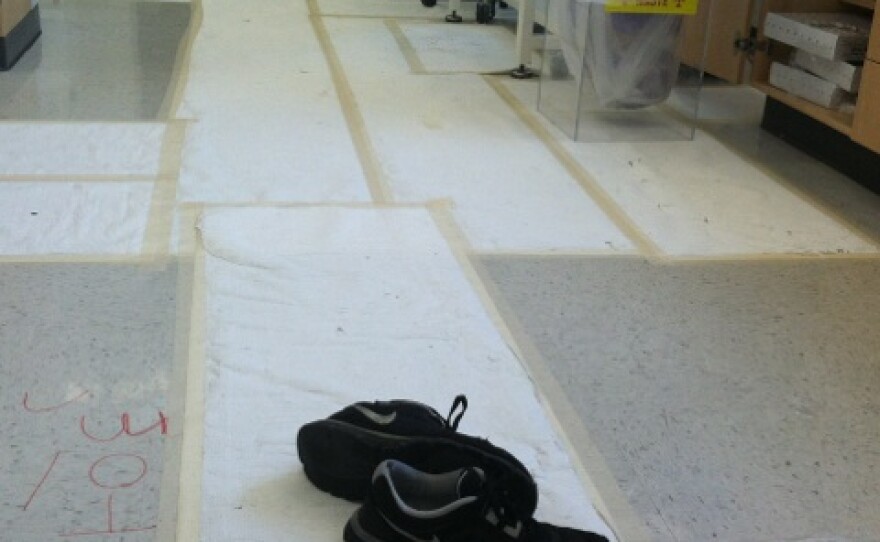At Florida State University, there’s a building. But it’s not what’s on the outside that matters—it’s the matter, on the inside. A recent trip to FSU’s Chemistry building reveals new research on rare elements going on at a lab that’s equally as rare.
FSU's Chemistry lab building is impressive. It was built from a $500 million royalty check that came to the school when it patented a cancer drug, Taxol. The space also houses the labs of FSU Chemistry Professor Thomas Albrecht Schmitt whose recent work on the rare elements of Berklium and Californium, has been getting lots of attention lately.
His son lounges on a chair in his office, immersed his tablet. He barely looks up, but calls out, "Dad, warn her about the Berkium."
It's slightly concerning--a child telling his father to warn the guest about an element--but Albrecht-Schmitt laughs it off. "It's just radiation. You're fine."
“Californium is the most useful of all the heavy elements," he explains on the way to the lab. "They use these little sources of Californium...it to irradiate ore and petroleum—it makes them temporarily radioactive, and when we look at the radioactivity coming off of them, we can tell what elements are in there."
It’s in this lab that FSU is doing some wicked science with Berklium and Californium. Both glow green and are highly radioactive, but they’re also safely locked in a transparent case with rubber gloves inside.
“You’re one of 50 people on the planet that’s seen this element," he says, sticking his hands in the gloves and picking up a vial with a small amount of light green liquid inside.
This chemistry lab is a category two facility. Labs are ranked on a scale from 5-to-1 and the scale is based on the amount of plutonium, or its equivalent a lab can have. Think World War II and the Manhattan Project. That’s a Level 1. FSU is the only university in the nation to house a Level 2 a lab. That’s drawn researchers from around the world to Tallahassee. Plutonium is created when Uranium, breaks down. And those other elements—Berklium and Californum—are far more potent. They don’t currently exist naturally. But they used to.
“We can look at super-nova events that recently occurred, and we can see the spectral properties and we can see the colors and so we know they once existed here and are long gone," he says.
So what’s the point of studying highly radioactive elements made in a lab? And why should anyone care about elements?
“As human beings, we’re hungry to understand the nature of the universe. I’m one of those people who wants to know how it works. One is, we need more energy. Even though nuclear is controversial, we’re seeing worldwide climate change. Nuclear has a small carbon footprint."
But there’s also nuclear waste. And. Albrecht-Schmitt says studying these elements, can teach scientists more about how to address the problem, and figure out new ways to recycle spent nuclear fuel.
“There's understanding the universe. There's cleaning up the mess of the cold war legacy...there's a lot of things that need to be done, both applied, and a lot of fundamental questions that remain unanswered. That’s why I’m here."







